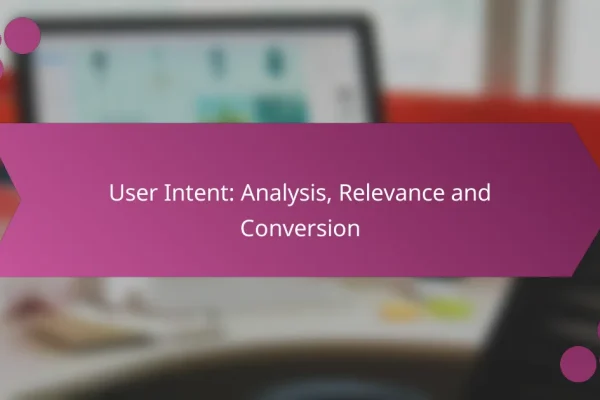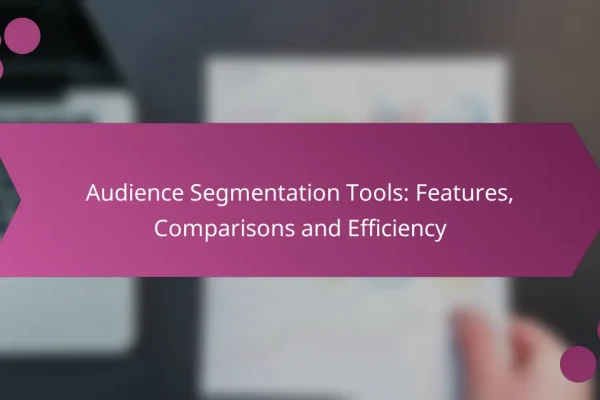How to segment display advertising target audiences in Ireland?
Segmenting display advertising target audiences in Ireland involves categorizing potential customers based on specific characteristics to enhance ad effectiveness. This process can significantly improve engagement and conversion rates by ensuring that the right message reaches the right people.
Demographic segmentation
Demographic segmentation divides audiences based on characteristics such as age, gender, income, education, and family status. For instance, targeting young adults aged 18-24 may require different messaging compared to older adults aged 45-60. Understanding these demographics helps tailor campaigns to resonate with specific groups.
In Ireland, consider local demographics like the growing population of young professionals in urban areas. This insight can guide the creation of targeted ads that appeal to their lifestyle and preferences.
Behavioral segmentation
Behavioral segmentation focuses on consumer behaviors, including purchase history, brand interactions, and online activity. By analyzing how users engage with your brand, you can create personalized ads that reflect their interests and past behaviors. For example, retargeting ads can be effective for users who have previously visited your site but did not convert.
In Ireland, utilizing behavioral data can help identify trends such as seasonal shopping habits or preferences for local products, allowing for timely and relevant advertising strategies.
Geographic segmentation
Geographic segmentation involves targeting audiences based on their location, which can influence buying behavior. This can include country, region, city, or even specific neighborhoods. For example, a campaign promoting a local event in Dublin would be irrelevant to audiences in other parts of Ireland.
Understanding regional preferences and cultural nuances is crucial. Tailoring ads to reflect local customs or languages can enhance relatability and effectiveness, particularly in diverse areas.
Psychographic segmentation
Psychographic segmentation categorizes audiences based on their lifestyles, values, interests, and personality traits. This approach allows advertisers to connect with consumers on a deeper emotional level. For instance, targeting environmentally conscious individuals with sustainable product ads can lead to higher engagement.
In Ireland, consider the growing interest in wellness and sustainability among consumers. Ads that align with these values can resonate more strongly with specific audience segments.
Technographic segmentation
Technographic segmentation focuses on the technology preferences and usage patterns of consumers. This includes the devices they use, software preferences, and online behavior. For example, targeting mobile users with ads optimized for smartphones can improve user experience and engagement.
In Ireland, understanding the prevalence of mobile internet usage can guide the development of mobile-friendly ads, ensuring they reach audiences effectively across various platforms.
What tools can assist with audience segmentation?
Several tools can effectively assist with audience segmentation, allowing marketers to better understand their target demographics. These tools provide insights into user behavior, preferences, and characteristics, enabling more tailored advertising strategies.
Google Analytics
Google Analytics is a powerful tool for audience segmentation, offering detailed insights into website traffic and user behavior. It allows marketers to create segments based on various criteria such as demographics, interests, and user engagement levels.
To effectively use Google Analytics for segmentation, set up goals and conversion tracking to measure the performance of different audience segments. Regularly review the Audience Overview reports to identify trends and adjust your marketing strategies accordingly.
Facebook Audience Insights
Facebook Audience Insights provides valuable data about users on the platform, helping marketers understand their target audience’s demographics, interests, and behaviors. This tool is particularly useful for businesses looking to run targeted ad campaigns on Facebook.
Utilize Facebook Audience Insights to create custom audiences based on specific criteria, such as location, age, and interests. This allows for more effective ad targeting, increasing the likelihood of engagement and conversions.
Adobe Audience Manager
Adobe Audience Manager is a data management platform that helps marketers create audience segments based on first-party, second-party, and third-party data. It enables the integration of various data sources to build comprehensive audience profiles.
When using Adobe Audience Manager, focus on defining clear audience segments that align with your marketing objectives. Leverage its capabilities to analyze audience behavior across different channels, which can enhance cross-channel marketing efforts.
What are the benefits of effective audience segmentation?
Effective audience segmentation allows advertisers to tailor their campaigns to specific groups, resulting in more relevant messaging and improved overall performance. By understanding the distinct characteristics and preferences of different segments, businesses can optimize their advertising efforts and achieve better outcomes.
Improved ad targeting
Improved ad targeting is a direct result of effective audience segmentation. By identifying specific demographics, interests, and behaviors, advertisers can create tailored messages that resonate with each group. This precision reduces wasted ad spend and increases the likelihood of reaching potential customers.
For example, a fitness brand might target young adults interested in health and wellness, while a luxury car manufacturer may focus on affluent individuals with a penchant for high-end vehicles. This targeted approach ensures that ads are shown to those most likely to engage with them.
Higher conversion rates
Higher conversion rates often follow effective audience segmentation as ads become more relevant to the viewer. When individuals see advertisements that align with their interests and needs, they are more likely to take action, such as making a purchase or signing up for a newsletter.
Studies suggest that targeted ads can lead to conversion rates that are significantly higher than generic campaigns. For instance, businesses may experience conversion rates that are several times greater when they focus on well-defined audience segments compared to broad targeting strategies.
Enhanced customer engagement
Enhanced customer engagement is another key benefit of effective audience segmentation. When ads are tailored to specific segments, customers feel more understood and valued, leading to increased interaction with the brand. This can manifest in higher click-through rates, more social media shares, and greater brand loyalty.
To foster engagement, brands should consider using personalized content and offers that speak directly to the interests of each segment. For example, a travel agency might send customized vacation packages to families, while offering solo travelers unique adventure experiences. This level of personalization can significantly boost customer interaction and satisfaction.
What criteria should be considered for audience segmentation?
Effective audience segmentation for display advertising requires considering demographic, psychographic, and behavioral criteria. These factors help advertisers tailor their messages to specific groups, enhancing engagement and conversion rates.
Market research
Market research is essential for understanding the landscape in which your audience operates. It involves gathering data on competitors, industry trends, and potential customer segments. This information can help identify gaps in the market and opportunities for targeted advertising.
Utilize surveys, focus groups, and online analytics to gather insights. For example, a survey might reveal that a significant portion of your audience prefers eco-friendly products, allowing you to tailor your campaigns accordingly.
Consumer behavior analysis
Analyzing consumer behavior involves studying how potential customers interact with your brand and similar products. This includes tracking online activity, purchase history, and engagement with previous advertising efforts. Understanding these patterns can inform more effective segmentation strategies.
Consider using tools like Google Analytics to monitor user behavior on your website. For instance, if data shows that users who engage with video content are more likely to convert, you can focus your display ads on video formats to capture this audience segment.
What are the challenges in audience segmentation for display advertising?
Audience segmentation for display advertising faces several challenges, including data privacy concerns, the complexity of data integration, and the need for accurate targeting. These issues can hinder effective ad delivery and reduce campaign performance.
Data privacy regulations
Data privacy regulations significantly impact audience segmentation by restricting how advertisers can collect and use consumer data. Laws such as the General Data Protection Regulation (GDPR) in Europe and the California Consumer Privacy Act (CCPA) in the United States impose strict guidelines on data handling.
Advertisers must ensure compliance with these regulations to avoid hefty fines and reputational damage. This often requires obtaining explicit consent from users before collecting their data, which can limit the available audience pool for targeted advertising.
To navigate these regulations, businesses should implement transparent data practices, such as clear privacy policies and user-friendly consent forms. Regular audits of data usage and adherence to regulations can help maintain compliance and build consumer trust.










